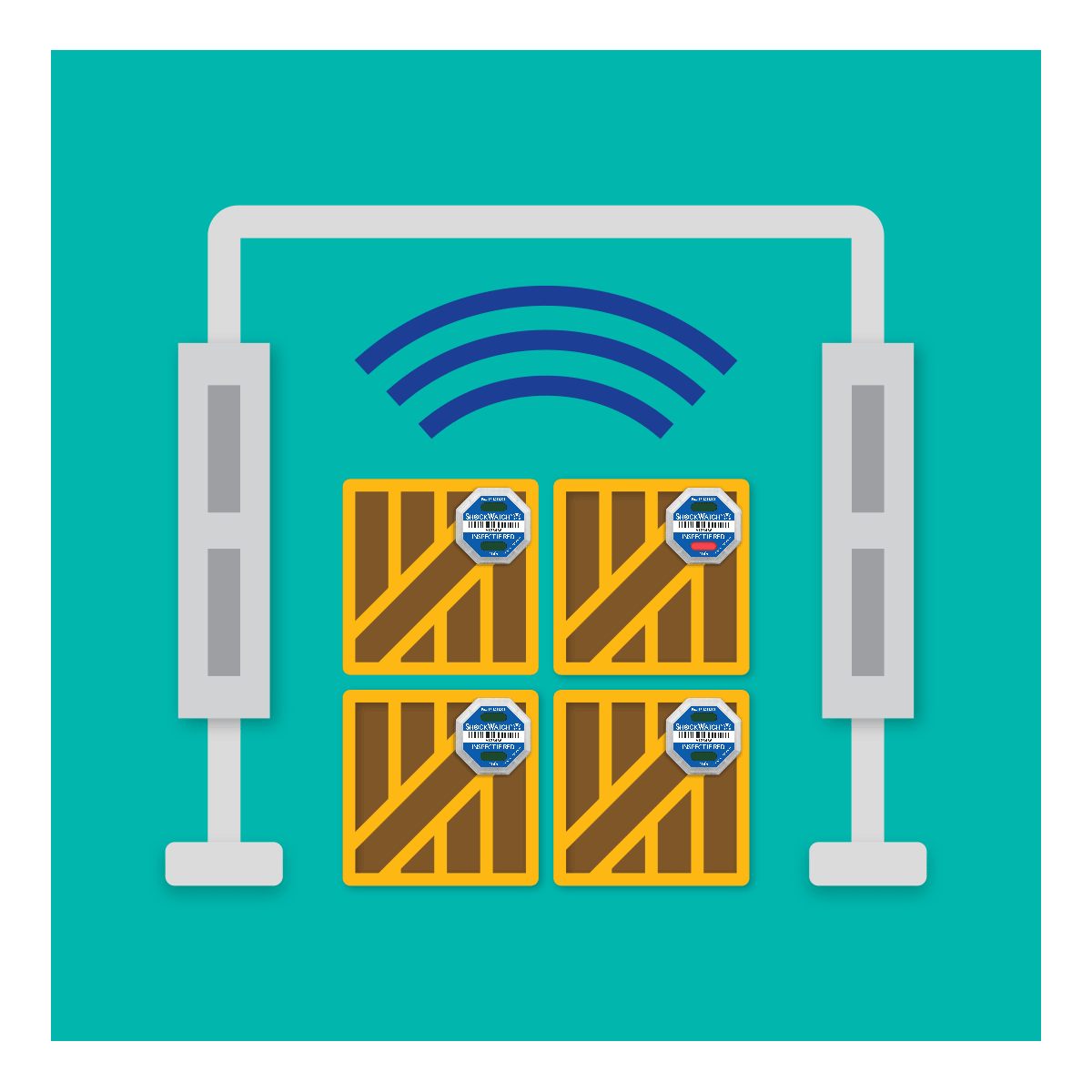Data Center Servers Case Study: ShockWatch RFID
Product Solution: ShockWatch RFID

Read The Story
Data Center Servers Case Study: ShockWatch RFID
Company Profile
Application: Data Center Servers
Challenge: With such vast numbers of servers, it’s important to ensure they arrive from their manufacturers in pristine condition, ready to be installed.
ShockWatch RFID Tags Reduce Damage to Data Center Servers & Equipment
Large data centers house 50,000 to 80,000 or more servers, and service providers typically have multiple large facilities. At each site, those servers are refreshed approximately every three to five years, according to the Uptime Institute Global Data Center Survey 2020. With such vast numbers of servers, it’s important to ensure they arrive from their manufacturers in pristine condition, ready to be installed.
To do this, one leading web service provider insists that its contract manufacturers use ShockWatch® RFID passive tags to monitor each shipment of servers, components, and server racks. Its goals are to prevent damage as well as to identify hidden damage before servers are installed.
Throughout the logistics industry, two to three percent of all shipments are damaged in some way. Those costs add up, and trickle throughout the data center.

$250,000. These high-end servers are complex, containing multiple drives, processors (with up to 28 cores per processor), sockets, and power supplies. There are, therefore, hundreds of circuits, connections and solders that may be fractured by impact. Even foam packaging that flakes off because of friction-induced vibrations can infiltrate servers and lead to damage.
Now imagine a crate of these special servers being bumped by a forklift during transport. Without a way to know the impact occurred, servers with hidden damage may be placed into service, only to fail later.
The Uptime Institute’s survey indicated 40% of outages cost their organizations between $100,000 and $1 million. As the survey showed, those costs are rising.
Gartner, a leading IT consultancy, noted two main areas of loss: Transactions that could be lost to time or competitors, and deleterious effects upon stakeholders. Unplanned downtime, therefore, gives customers a reason to chose another data center or cloud host.


Without a way to know the impact occurred, servers with hidden damage may be placed into service only to fail later.
The risk of damage can be reduced by using multiple, highly visible RFID impact indicators. Because freight handlers know someone is watching, they tend to handle the crates more carefully. As a result, damage often is reduced by 40-60 percent.
Data centers and web service providers consider the combination of RFID with impact sensors as future-proofing. Even though RFID isn’t evenly deployed throughout their supply chains, they are confident it will be. They expect their partners to be prepared. Therefore, they specify that ShockWatch RFID passive tags monitor each shipment of equipment coming to them from their manufacturing partners, even when the carrier or receiving site isn’t RFID-ready.
Servers may be among the components most vulnerable to damage, but even server racks can be harmed, especially if they are moved while loaded.




ShockWatch RFID is affixed to an asset
ShockWatch RFID is scanned by a standard UHF reader
RFID tags also have another data center application. Many sites tag each server and rack throughout the server rooms and install passive RFID readers at server room doors. Bank of America and Wells Fargo, for example, have used RFID tags in their data centers since at least 2009. Consequently, hardware inventory is easier and faster.
With RFID readers that can process as many as 500 tags per second, a 50,000 square foot data center can be inventoried in a few hours (or less) simply by walking the data center aisles with a passive RFID tag reader. Doing this manually normally would take 10-12 days. Additionally, IT technicians can track server deployments or relocations automatically, including servers that have been decommissioned but not removed from their racks (and so are still drawing power).
SpotSee’s is the only RFID tag that combines impact monitoring with the automatic tracking capabilities of passive RFID,
thus providing a robust solution for data centers today and into the future.
Extend the power of your RFID program by monitoring for damage
Every company wants to improve their supply chain processes. RFID technology aided companies in improving inventory
control. The ShockWatch RFID impact indicator allows companies to leverage the inventory tracking benefits of RFID and
the benefits of an impact monitoring program. With ShockWatch RFID impact indicators, the need for visual inspections
during the receiving process is greatly reduced. When shipments are scanned, the receiver will know if there has been
a potentially damaging impact. If the ShockWatch RFID has activated, inventory can be isolated for further inspection. If
there has been no impact, the shipment can be moved into saleable inventory.
ShockWatch RFID impact indicators deliver all the benefits of an impact monitoring program – reduce damage from mishandling, refine supply chain processes so mishandling can be prevented, drive down costs – plus an electronic record of the information. Armed with data, it is possible to track down trouble spots in the supply chain and implement process changes to improve outcomes.
ShockWatch RFID impact indicators are single use devices that are tamperproof, field armable, turn red when an impact occurs and can be scanned with a standard UHF reader. Passive RFID technology is employed in the indicator so there is never a battery life issue to consider.


- Acts as a visual deterrent to mishandling
- Expands the utility of RFID with damage monitoring
- Reduces receiving times and isolates items that need inspection
- Reduces mishandling through awareness
- Helps identify trouble spots in the supply chain from production to transportation to storage








